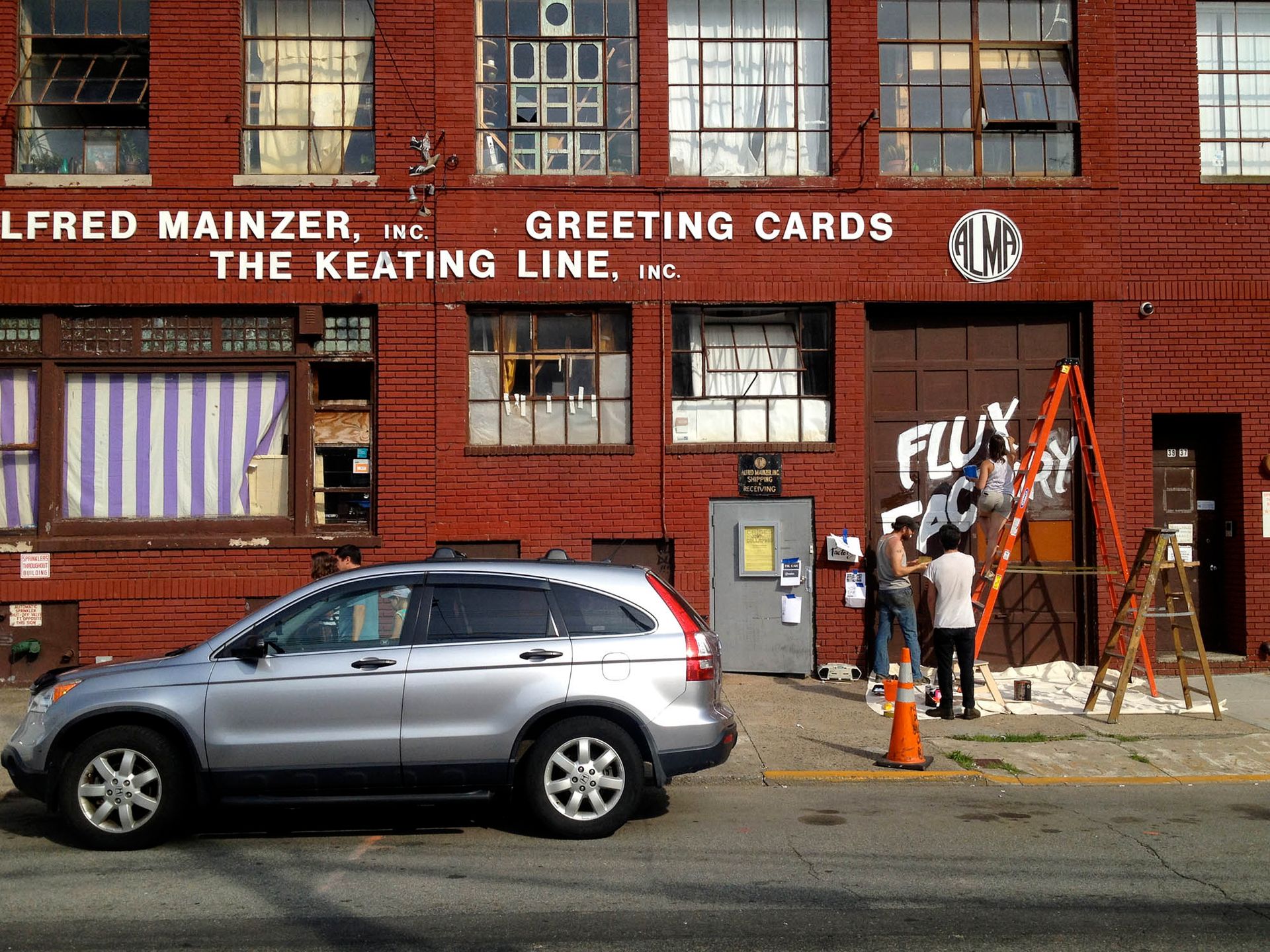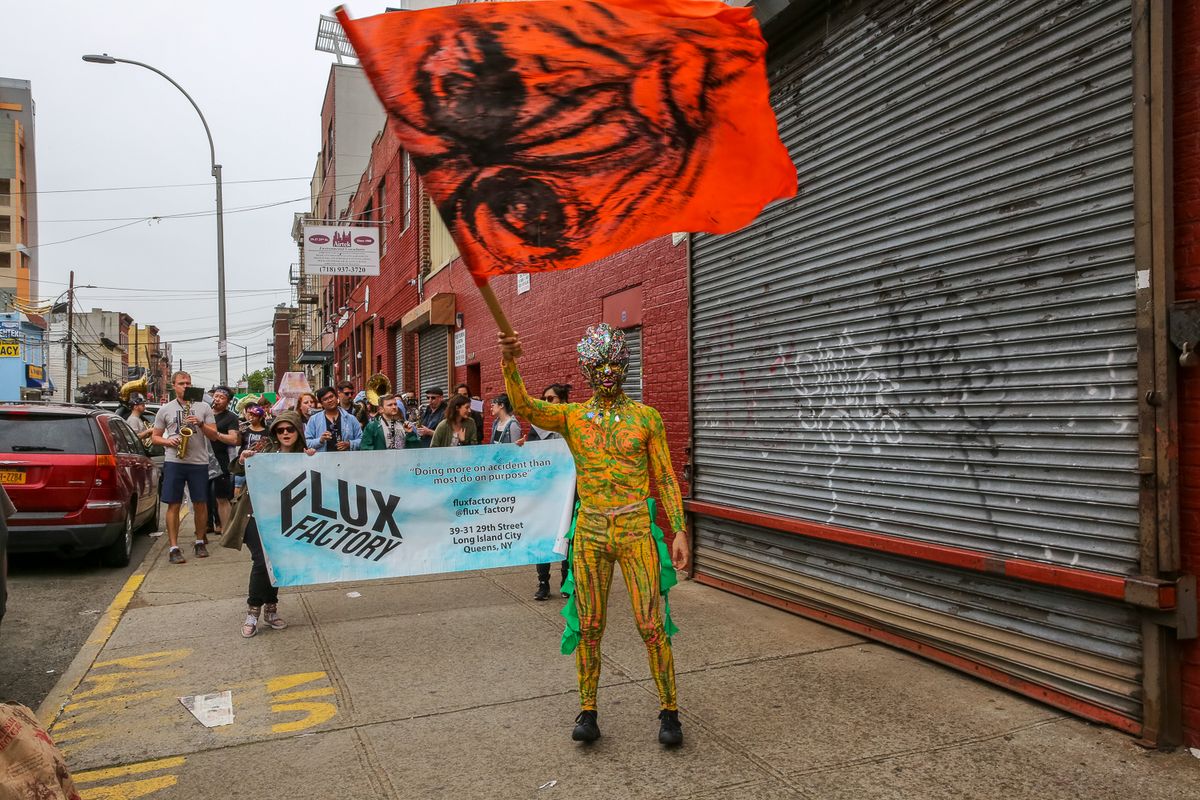In a Queens neighbourhood full of glittering new high-rise developments, a small artist-led nonprofit has managed to not only survive, but is expanding its footprint. Flux Factory, an arts organisation focused on supporting emerging artists and practices, has recently purchased two permanent locations in Long Island City, and now owns both its longtime home base in a converted factory on 29th Street and a new space in the Hunters Point waterfront development. Both spaces will open in summer 2022 following renovations. In a New York arts ecosystem terminally dogged by rising rents, the purchases represent rare points of hope—especially because they were made possible largely through municipal programs.
“It’s like a four-dimensional sudoku puzzle where a free building comes at the end of it,” says Nat Roe, Flux Factory’s executive director, of the programs that made the organisation’s new spaces possible.
The largest component of these purchases is a little-known and even lesser-used funding process provided by New York City’s Department of Cultural Affairs (DCLA). In addition to providing grants, funding artist residencies and supporting cultural institutions throughout the city, the DCLA also makes annual capital allocations to help fund various cultural projects and spaces. According to the DCLA, these allocations can include funds for purchasing equipment, which carry a minimum of $50,000 per request, as well as funds for larger-scale construction and renovation projects, which carry a minimum of $500,000 per request. It was through this program that Flux Factory was able to secure enough funding to purchase both of its spaces, to the tune of around $5m. But to hear Roe tell it, a municipal investment like this is not easy to come by.
“It’s usually used for things like HVAC systems or new wings of museums,” he says, pointing out that Flux Factory represents only the second time in 40 years that DCLA funds have been used to purchase an entire space—the other organisation to do so is the nearby Chocolate Factory theater, which recently moved into its new, permanent home on 24th Street. Securing the allocations was a yearslong process for Roe and Flux Factory, the end product of many applications and byzantine approval processes.
Much of the difficulty in securing these funds can be traced back to the “restrictive covenants” DCLA attaches to its allocations, which require that the city has first lien rights on invested-in properties in order to ensure that the allocated funds serve the public interest and not just private property owners. Since most small art organisations rent their spaces and cannot guarantee the long-term oversight of assets, they are often automatically disqualified from this source of funding.

The main Flux Factory building on 29th Street in Queens Photo by Jason Eppink, via Flickr
“If you imagine Flux Factory as renters, the city cannot invest in, for instance, expanding our building, because it would go back to the owner after the lease is done,” Roe explains. “The city has to invest in [organisations] that are already in this extremely fortunate position of owning their own space. And that is largely organisations that are wealthy enough to own their own space.”
The resulting concentration of funds can sound like a microcosm of American arts support at large: more money for the moneyed, scraps for the precariats already on the fringe. But in Flux Factory’s case, savvy maneuvering and a fair amount of luck has resulted in two paid-for spaces that, thanks to the restrictive covenant clauses, will remain cultural facilities for the next three decades. “We’re not allowed to turn it into a Starbucks,” Roe jokes. “We’re condemned to be ourselves by law for the next 30 years.”
The municipal focus on shoring up cultural organisations for the long term is echoed in the deals behind the organisation’s brand-new space, Flux IV, which will occupy the ground floor of Gotham Point, a new development in Hunters Point. The waterfront site, which sits on the Queens shore near the confluence of the East River and Newtown Creek, has been the focus of a decade-long redevelopment program, resulting in the sort of high-rise developments that can signal a death knell for community spaces. But thanks to a city-mandated master plan that required developers to include space for cultural organisations, Flux Factory now has a permanent home in the ground floor of one of those gleaming towers—towers where 75% of units are designated as affordable, Roe points out.
“For decades now there’s been an affordability crisis in New York City,” Roe says. “People, homes, small businesses— they have been getting displaced left and right. This is an important anti-gentrification mechanism that the city could be using strategically.” In an area that has already been a flashpoint in the conflicts between developers and artists and between enormous construction projects and local communities, Flux Factory’s path toward permanence could offer a roadmap out of arts precarity.
In the meantime, Roe and Flux Factory are focused on making the most of their newfound longevity. A community garden, public refrigerator, more affordable residency and water-based programming are among the items on the docket for the organisation.
“These things that have a massive outsize impact on the character of a neighbourhood can start in a cultural space,” Roe says. “When that cultural institution is itself sustainable, and can focus on making programs sustainable, it’s so much more powerful in terms of promoting community interconnectivity. If you’re on your way out yourself, you can't pull people up.”
- Flux Factory will host the virtual “Rethinking Residencies Symposium” 8-10 December


